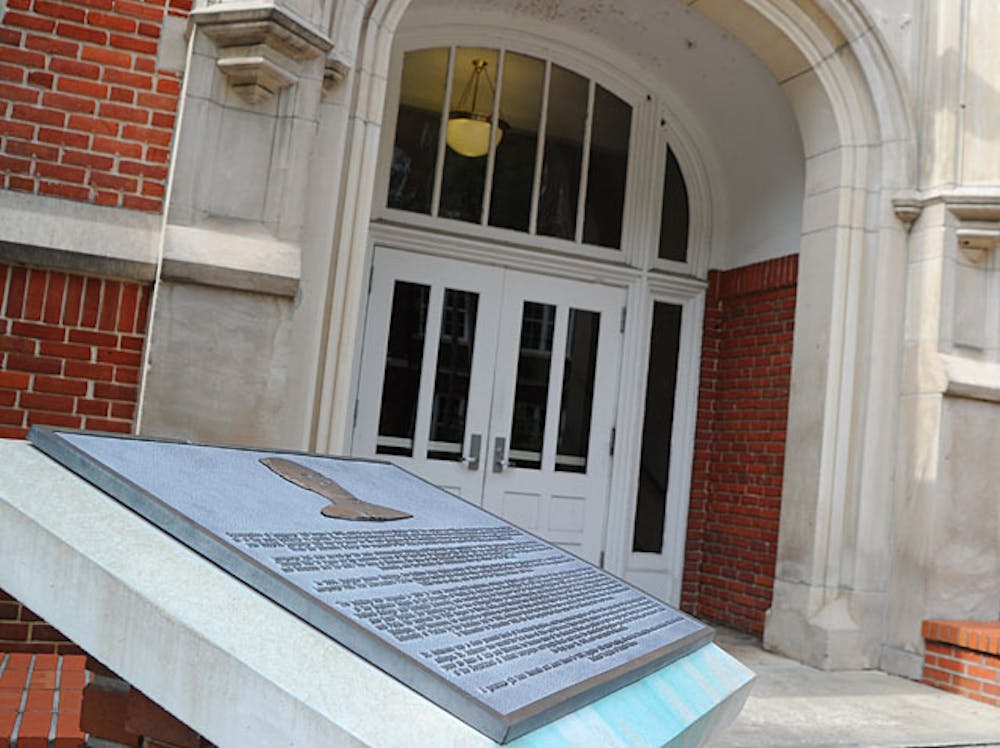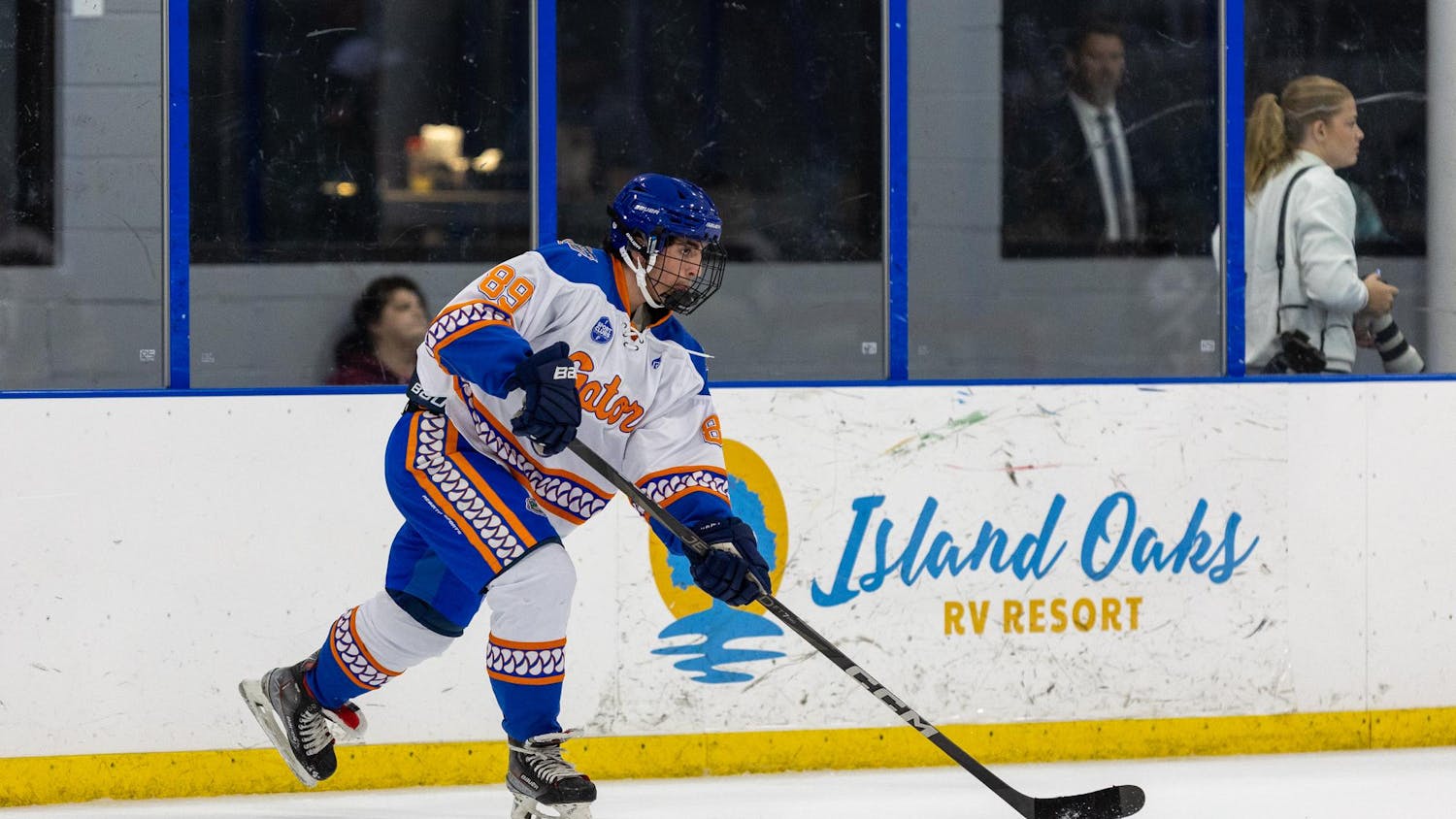Twenty-nine names have been etched into UF's landscape - literally.
The names are found in front of 27 of the 44 named buildings at UF on bronze plaques set atop concrete pedestals. The displays, funded by the UF Foundation, honor men and women who significantly contributed to the university.
Some were presidents, some deans, at least two soldiers, about half a dozen agriculturalists and some were just rich enough to donate money to the university. Only one is still alive - 81-year-old former UF President Marshall Criser Jr., who still lives in Gainesville.
Two buildings, Griffin-Floyd Hall and Keene-Flint Hall, honor two people each with their plaques.
Raymer F. Maguire Jr. created the commemorative plaque endowment program in 1988. The original donation by Maguire, who graduated from UF's law school in 1948 and died in 2003, was invested, and the money earned from the investment is used each year to support the program.
Currently, constructing the black plaques and concrete pedestals costs about $3,000 each, said UF Foundation spokesman Chris Brazda. He did not know how much the older plaques cost.
The program is ongoing, and 17 more buildings need plaques and pedestals, Brazda said.
The four most recently installed plaques were finished three weeks ago at the Marston Science Library, Norman Hall, Weimer Hall and Williamson Hall, according to Mike Barsaleau, facilities manager for the UF Foundation.
The foundation works on plaques for the oldest buildings first, according to Cindy Belknap, the foundation's director of stewardship and donor relations.
"The beauty of the endowment is the endowment lasts forever," she said. "One hundred years from now, we'll still have that endowment, so the Emerson Alumni Hall will be a historic building by then."
The foundation's biographical researcher, Cynthia DeMates, is tasked with finding family members and finding facts about the people receiving plaques.
After that, Phoebe North, who received her master's of fine arts in poetry from UF, writes the biographies for the plaques.
The biographies need to fit on the 23-inch-by-30-inch plaques, and before the text is set, North and DeMates fact-check and proofread the less-than-300-word biography.
Each biography is checked about four times.
No plaques have needed to be corrected so far, Brazda said.
Some plaques are harder to write biographies for than others.
"One of the more recent ones we put up, we really could not find out anyone living to be able to ask them information, so we just had to depend on our researchers and archives," Belknap said.
The foundation usually gets family approval before writing the biography in stone.
"Families love to participate," she said
From start to finish, about a dozen hours are spent on each plaque's biography.
In the fall, the foundation will decide on the next set of plaques to work on, Barsaleau said.
After the foundation's decision, the plans will be submitted to the Preservation of Historic Buildings and Sites Committee, who will decide on the best locations for the pedestals and plaques.






